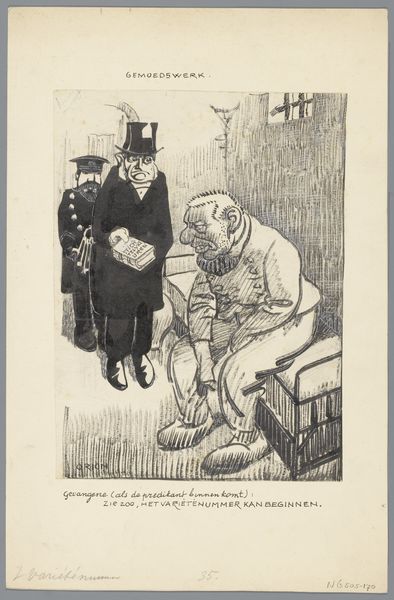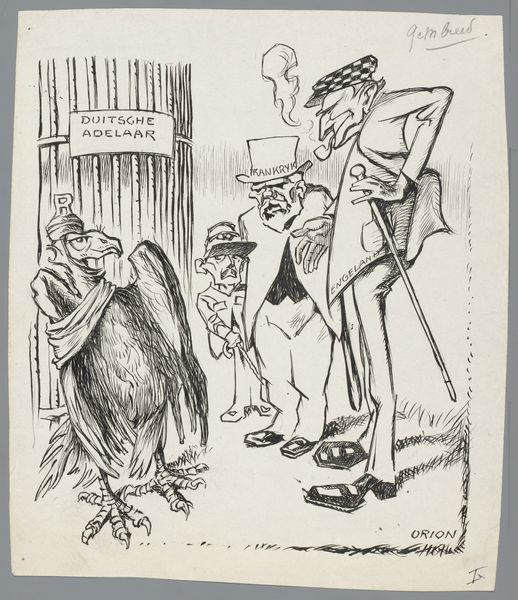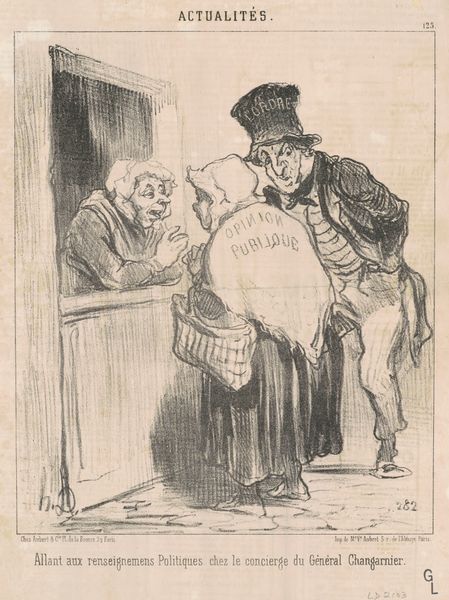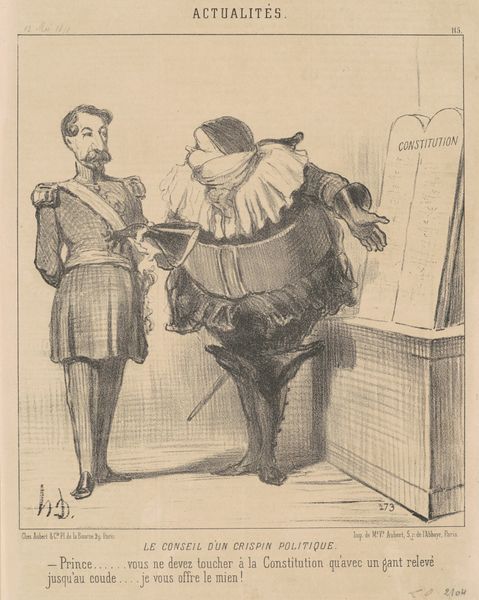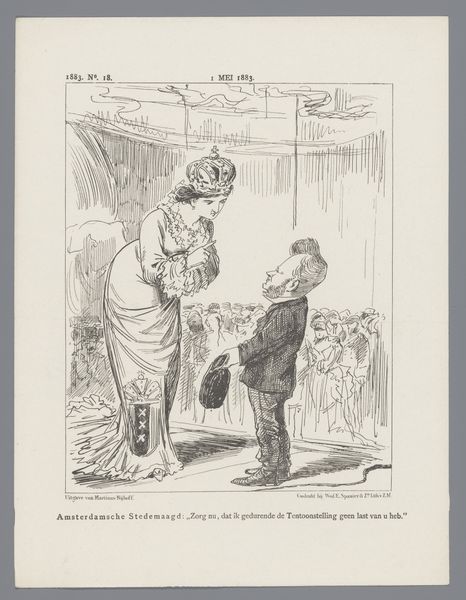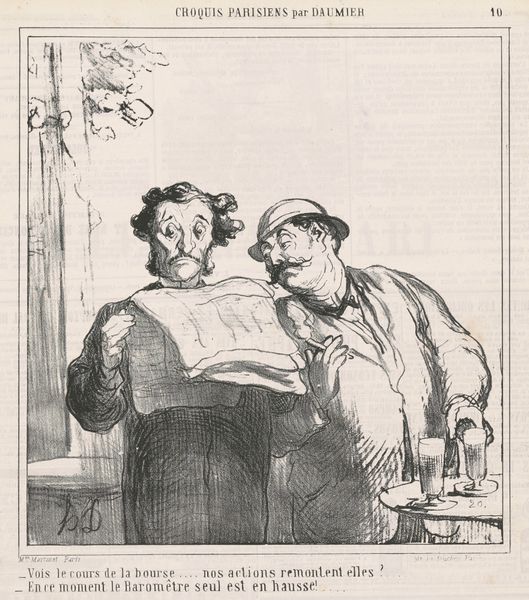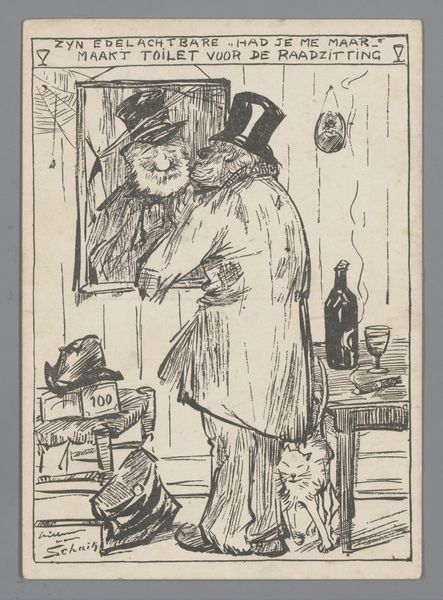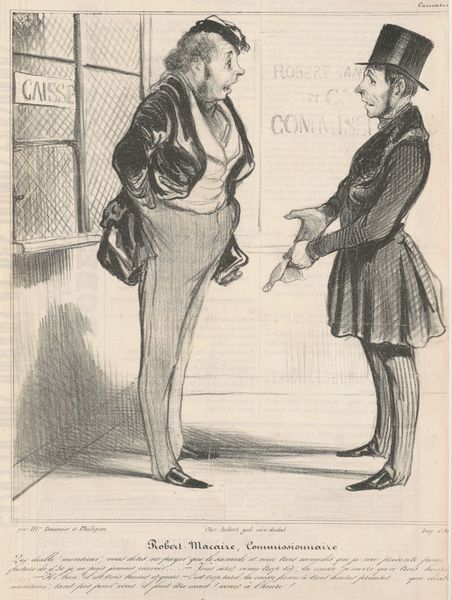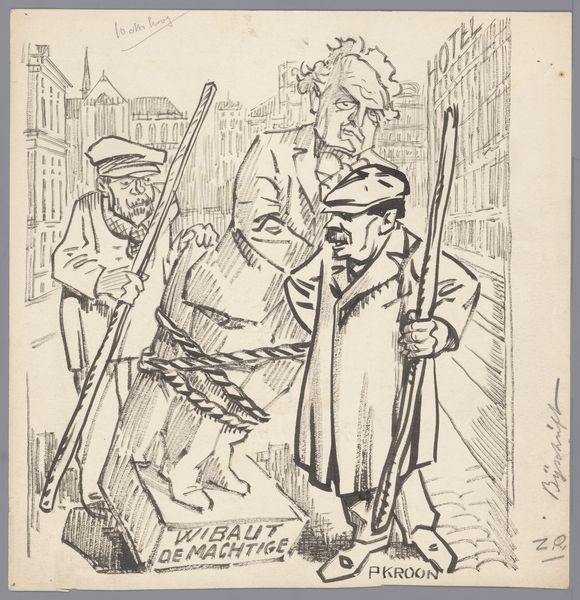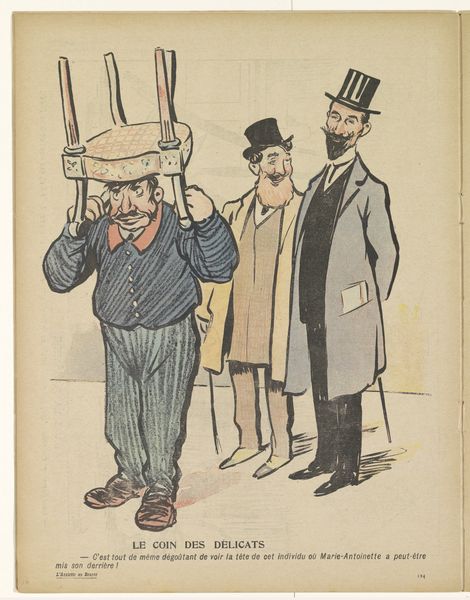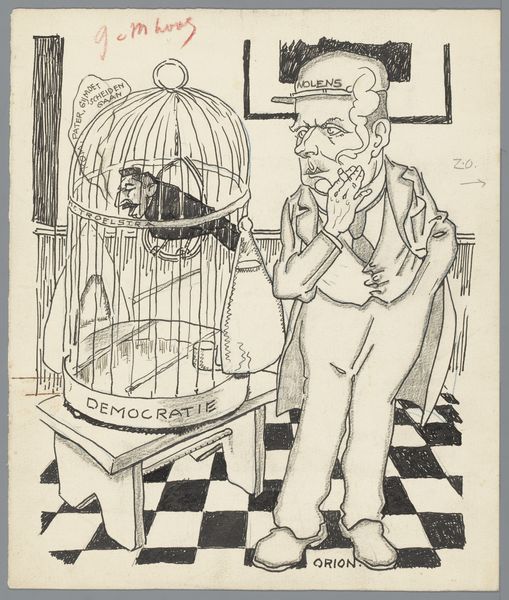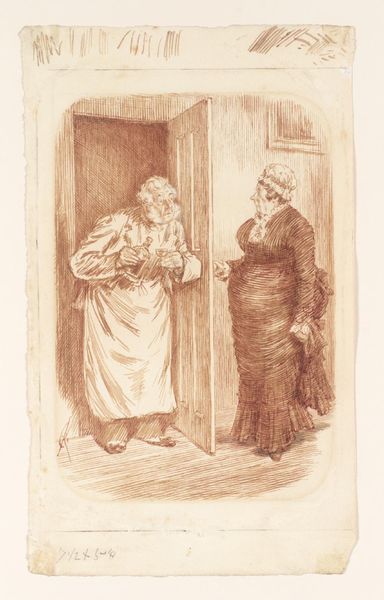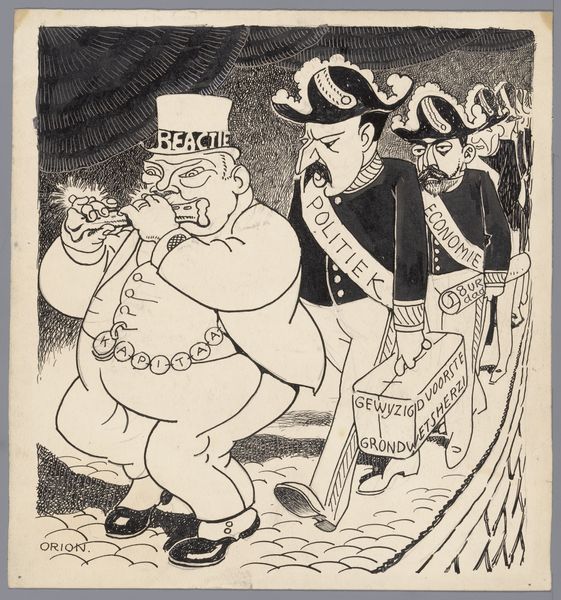
drawing, ink, pen
#
portrait
#
drawing
#
comic strip sketch
#
narrative-art
#
pen illustration
#
caricature
#
cartoon sketch
#
ink
#
ink drawing experimentation
#
pen-ink sketch
#
sketchbook drawing
#
pen
#
modernism
Dimensions: height 252 mm, width 209 mm
Copyright: Rijks Museum: Open Domain
Curator: We are looking at a pen and ink drawing, tentatively dated between 1915 and 1935, titled "Beumer en de stemplicht." The artist is listed as Orion. Editor: It’s intriguing! Immediately, I see a very dense composition. The cross-hatching and linework are quite intricate, creating a visually textured surface, a sort of chaotic order that seems very modernist. Curator: Precisely. Notice how the figures dominate the picture plane. A woman, rather stout and elaborately dressed, stands prominently, the word "STEMPLIGHT"—Dutch for "voting obligation"—emblazoned across her apron. Behind her, a man, presumably Beumer, holds a hat, seemingly attempting to usher her. Editor: The “voting obligation” symbolism feels very direct. It suggests a societal pressure or expectation, weighing down the female figure. She appears rather resistant, almost defiant, with her tightly clasped hands and furrowed brow. Her body language exudes a quiet rebellion. Curator: It could also be a critique of the compulsory nature of voting itself, common in the early 20th century in some countries. The visual tension between her stolid figure and Beumer's insistent gesture conveys that broader societal debate about individual freedom and civic duty. The exaggerated caricatures contribute to a reading on compulsory duties. Editor: And the hat in his hand— a symbol of polite society, perhaps a suggestion of the pressure coming from established structures? The cartoon style is an interesting element too. Is this commentary, satire? Is the man trying to compel the woman and saying ''I'm sure more people will move, it's the smallest amount of science for you all!''. Curator: Yes, absolutely. The use of caricature definitely suggests a critical stance, amplifying social commentary with sharp, even humorous observations. The materials themselves – pen and ink on paper – provide immediacy to the political debate. It also lends it a rough-and-ready appearance which seems appropriate for a contentious issue of the day. Editor: Considering the period of its creation, between 1915 and 1935, after women won enfranchisement in various Western countries, the artwork could speak to the challenges of changing social roles and the complex relationship between individual autonomy and state power. It reminds me to stay defiant! Curator: Agreed. "Beumer en de stemplicht" is more than a simple sketch, it's a layered representation that continues to provoke relevant questions about civic duties and personal freedom, while speaking eloquently on structure and form.
Comments
No comments
Be the first to comment and join the conversation on the ultimate creative platform.
